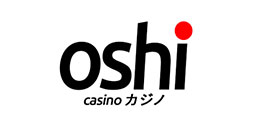Op Ed: The Way Atomic Swaps Could Function for Stock Market Trading
Minding the principle of nuclear swaps, direct stock-to-stock trades (Atomic Stock Exchanges) enable retail investors to avoid the forced conversion into money that occurs when investing in a stock to USD only to buy back another stock.
This disperse lively could potentially cause an issue since market makers are now being compensated by inventory instead of in cash, unlike with ordinary bid-ask spreads. Nevertheless, this could allow market makers to profit via the appreciation of those stocks during the trading day also. But nothing could avoid HFT from liquidating the stocks they get as money instantly as well, provided someone takes this particular trade.
Institutional investors can execute paired trades that never introduce them straight to fiat currency. But retail investors overlook this chance.
It’s a commonplace occurrence to switch between inventory places for retail investors and financial firms, and the prevention of touching money permits for its avoidance of trade fees that would usually be incurred when creating these transactions, along with the cost-saving consolidation of the bid-ask spreads on both of these stocks into one bid-ask disperse. While the larger cost saving could occur on direct stock-stock swaps, you can find incremental price savings about the bid-ask spread also.
This might squeeze HFT gross profits, but as a commodity business that offers a middleman assistance, we imagine they would ease this as a way to produce incremental earnings (when they aren’t any other options).
In traditional stock trades, retail dealers in public markets are not able to switch from 1 position to another without first going into cash. As an instance, an investor looking to exchange his or her Amazon stocks for PayPal stocks must first exchange these Amazon stocks for U.S. dollars, before purchasing PayPal stocks with these dollars.
Let’s imagine for simplicity that only the S&P 500 is available and that we want to rotate out of Google inventory into Facebook inventory because we believe that Facebook inventory has been shifted off of its basic value due to the Cambridge Analytica scandal. Thus, we want to swap our Google stocks for Facebook shares; because both of them are denominated in USD, there’s a ratio of exactly what one share is values relative to another share. In this hypothetical exchange, stocks are fractional, and you are ready to swap one Google discuss for 5.95 Facebook stocks and vice versa.
To start, Atomic Stock Exchanges would cost no exchange fees. Revenue can be made by selling order flow and the right to exchange on this exchange to HFT. The way the purchase and sell process would operate from inventory to stock might be: if a market order is placed, it’s specified which position the company would like to swap into, and given this trade is accessible, it’s filled by simply swapping shares. That is where HFT can be invaluable as a market maker and also be in a position to profit off the spread. This could act as a way to create a profit, and many exchanges try to obfuscate the fact that they earn money off retail investors .
From the circumstance of cryptocurrency, nuclear swaps are a suggested feature that may allow direct transformation between two cryptocurrencies without needing to use a third-party intermediary or swap. By employing hash time-locked smart contracts, the nuclear swaps guarantee that parties will deliver the currency needed for the trade, or else the trade is automatically canceled. These “all or nothing” trades preserve atomicity because they either occur or are repeated immediately. By way of instance, customer A could directly trade their bitcoin for customer B’s ether with complete confidence that the trade will either take place or terminate whether both party doesn’t even deliver their side of the deal.
This fashion of exchange creates unnecessary friction and cost due to a) trade costs incurred on the sale of the asset, in addition to on buying the new advantage; b) U.S. dollar buying power exchange-rate hazard; and c) trade fees paid to the broker that the buyer is using, in addition to the bid-ask disperse that is present for every publicly traded stock (which occurs on either the sale of the formerly held asset, in addition to on the recently purchased advantage ).
Can Be decimalization of shares in public markets the equivalent of decimalization for stock prices?
Conventional stock market trades may leverage the notion of nuclear swaps to facilitate direct stock-to-stock trades without requiring money positions.
Would the theoretical lack of (or not ) money be a problem for this market?
How about liquidity?
It’s crucial to figure out how to enable the buying of decimalized quantities of stocks and the way to couple users that are actually looking to swap stocks with each other. In private markets, counterparties have broad control over their transaction arrangements, but in general markets that this usefulness hasn’t yet been exploited. To put it differently, for atomic shares to work, an Atomic Stock Exchange would need to make decimalized shares. When we consider that for a retail user of E-Trade or Charles Schwab, then the expense of going from Amazon to Facebook is selling buying and one another, each of which carries a transaction fee, and we all see this might be a huge cost savings to the average retail investor, even if a service had to be compensated on the rear end to enable a decimalized share service to exist. But to get an Atomic Stock Exchange to become profitable, it would need to encourage substantial volume.
Atomic Stock Exchanges could feasibly utilize large-cap stocks that have deep pools of liquidity, such as stocks on the S&P 500, and the liquidity necessary for making the trades would be supplied by high-frequency traders (HFT) who would comprise the gap that exists.
Questions Value Considering
what’s the most important issue that would need to be overcome to make an Atomic Stock Exchange?
Atomic Swaps
Decimalization has contributed to tighter spreads due to the corresponding smaller cost increments and moves. By way of instance, stocks could be decimalized out to five decimal positions, which allows for the equivalent trading of shares.
In case you have any comments, questions or suggestions, please email ekuebler@uw.edu or even oavatare@uw.edu.
Atomic Stock Exchanges can be built on top of existing trades, which means that retail investors may still switch to money positions if they wish to achieve that.
Can any kind of similar trades already occur?
Many trades earn money by putting money that hasn’t even been invested in money market accounts. An Atomic Stock Exchange could allow for these kinds of money holdings also.
The “disperse ” this situation are the quantity of Google inventory you get when creating this trade. You would simply receive 5.93 stocks of Facebook whenever you’re doing this exchange, and also the market maker is getting 0.02 Facebook stocks in exchange for easing this transaction. These stocks add up over time in favour of the industry maker and serve as their profit as soon as they liquidate them.
By focusing on the needs of the average retail buyer, we realize that in several scenarios, the sale right into money is forced and doesn’t correspond with exactly what the investor actually wants, and that is to simply switch from a highly liquid position to the next.
Op Ed: How Atomic Swaps Could Work for Stock Market Trading - April 2024
EXPERTLY REVIEWED
MOBILE FRIENDLY
FAST PAYOUTS
- CasinoRatingBonusVisit Casino
Get your 100% Match Bonus up to $1000!
200% match bonus up to 2000
Up to 5 BTC
100% match bonus + 180 free spins
Get up to 1 BTC on First Deposit!
Welcome bonus up to 1.5BTC + 250 free spins
Get your 5 BTC Welcome Bonus
Top Rated







Search
Casino List
- Bovada Casino
- 7bit Casino
- Bitstarz Casino
- Sun Palace Casino
- Ignition Casino
- Tangiers Casino
- Nitrogen Sports Casino
- Casumo Casino
- Fortunejack Casino
- Mars Casino
- Mbit Casino
- Cafe Casino
- Drake Casino
- Grand Fortune Casino
- CryptoReels Casino
- Wild Casino
- Betchain Casino
- Oshi Casino
- Bitcoin Penguin Casino
- Joe Fortune Casino
- Vegas Casino.io








